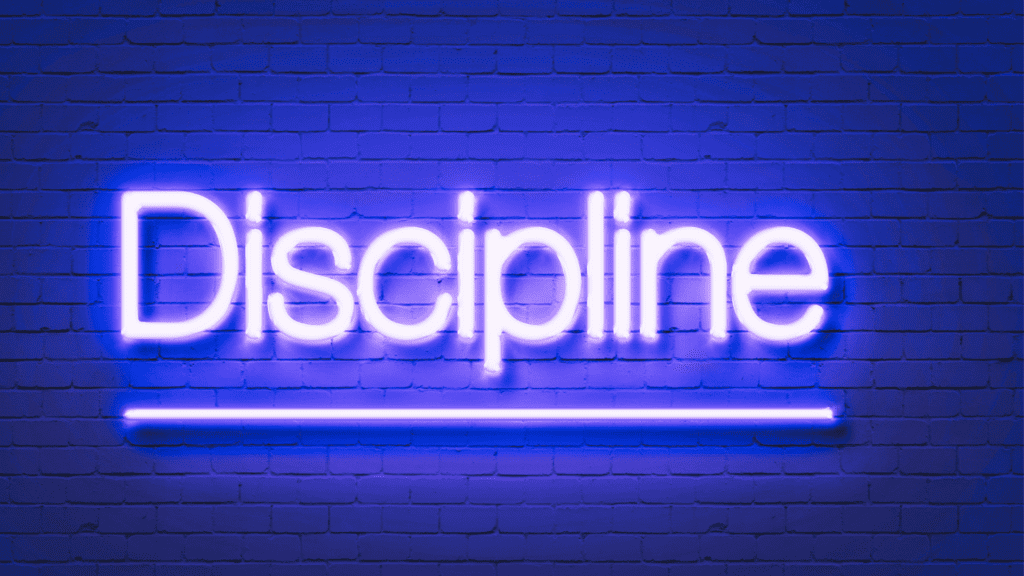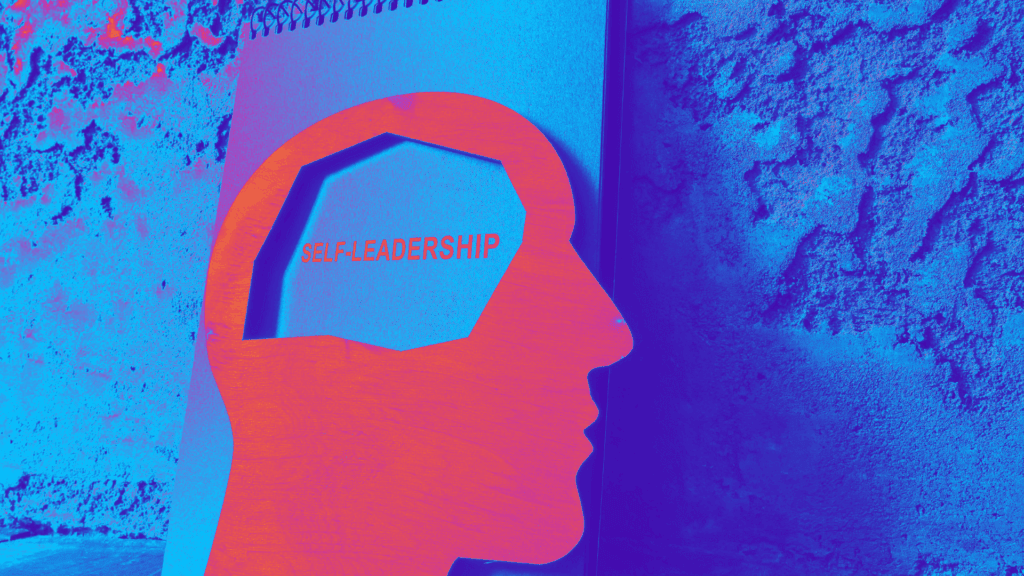Promises, Promises, Promises
Have you ever promised yourself to make a change—wake up earlier, stick to a diet, or stop procrastinating—only to fall back into old habits? You’re not alone. For many, self-discipline feels elusive, something reserved for others. But the truth is, self-discipline isn’t a gift you’re born with; it’s a skill anyone can develop with practice and an understanding of how your brain works. Understanding the nuance of self-discipline, is crucial for personal growth.
Let’s explore how to strengthen your self-discipline, master a disciplined mindset, and achieve meaningful self-control for lasting change.
The Science of Willpower
Willpower is often thought of as an innate trait, but neuroscience reveals that it operates like a muscle. The prefrontal cortex—the area of your brain responsible for self-control—gets fatigued with overuse. This explains why it’s harder to resist temptations or stay focused after a long day.
How to Strengthen Your Brain’s Willpower Muscle: Neuroscience Based Strategies
Self-discipline is closely tied to the brain’s ability to manage impulses and regulate behavior. The prefrontal cortex, the area responsible for self-control, operates like a muscle—it can be strengthened with intentional effort or weakened by neglect. Here are scientifically supported strategies to enhance your brain’s capacity for willpower.
Optimize Your Brain’s Energy Supply
The brain is one of the most energy-demanding organs, and its ability to exert self-control depends on consistent glucose levels. When blood sugar drops, the prefrontal cortex struggles to function effectively, leading to poor decision-making and reduced self-discipline.
Neuroscientific Tip: Focus on consuming low-glycemic foods such as whole grains, vegetables, and proteins to provide steady energy. Avoid the peaks and crashes caused by sugary snacks.
Prioritize Quality Sleep for Neural Restoration
Sleep plays a critical role in restoring the prefrontal cortex’s ability to regulate impulses. Sleep deprivation not only impairs cognitive function but also disrupts the communication between the prefrontal cortex and the amygdala, the brain’s emotional center, making it harder to resist temptations.
Neuroscientific Tip: Follow a consistent sleep schedule and aim for 7-9 hours of sleep. Limit blue light exposure before bed, as it interferes with melatonin production, and establish calming bedtime rituals like reading or meditation.
Harness the Power of Movement
Regular physical activity increases neuroplasticity, or the brain’s ability to adapt and grow, and enhances executive function, which includes impulse control and focus. Exercise also stimulates the release of dopamine and serotonin, neurotransmitters associated with motivation and mood regulation.
Neuroscientific Tip: Incorporate aerobic exercise, such as brisk walking or cycling, at least 30 minutes a day. Even short bursts of movement, like stretching or taking a quick walk, can boost brain function and discipline.
Train Your Brain Through Mindfulness Practices
Mindfulness meditation strengthens neural pathways in the prefrontal cortex while reducing activity in the default mode network (DMN), which is responsible for mind-wandering and self-doubt. Over time, mindfulness improves emotional regulation and the ability to stay focused on long-term goals.
Neuroscientific Tip: Start with 5-10 minutes of mindfulness meditation daily. Focus on your breath or use a guided meditation app. Over time, you’ll notice improved self-awareness and a greater ability to pause before reacting to impulses.
By integrating these neuroscience-backed techniques into your routine, you’ll build a stronger foundation for self-discipline and better equip your brain to handle challenges and distractions.

Why We Struggle with Self-Discipline
Self-discipline feels hard because your brain is naturally wired to seek immediate gratification. This tendency stems from the limbic system, the brain’s reward and emotional processing center, which has been evolutionarily designed to prioritize short-term rewards that ensure survival. For example, in ancient times, acting on immediate impulses like eating when food was available or fleeing from danger increased chances of survival.
In contrast, the prefrontal cortex, responsible for logical reasoning and long-term planning, evolved later and often takes a backseat when emotions or stress are high. This dynamic creates an internal tug-of-war. When the limbic system is in control, you might find yourself reaching for a cookie instead of completing that project or procrastinating on a task that feels daunting, even if it’s crucial for your future success. Many wonder, ‘What is the meaning of self discipline?’ It’s the ability to control one’s emotions and behaviors to achieve long-term goals. For all intents and purposes, this is what is meant by self-discipline.
Interestingly, studies have shown that chronic stress further amplifies the limbic system’s dominance, making it even harder to resist temptations and prioritize long-term goals. This is why high-stress environments can exacerbate feelings of failure when trying to maintain discipline.
But this isn’t a battle you have to lose. Neuroscience reveals that the brain is adaptable through a concept called neuroplasticity. With intentional practice, you can strengthen the prefrontal cortex’s ability to regulate impulses, helping it “win” over the limbic system more often. By implementing the right strategies, such as mindfulness, habit restructuring, and stress management, you can train your brain to prioritize long-term rewards over short-term temptations, effectively rewriting your default behavior patterns. These strategic concepts will teach you how to build self discipline that becomes an enduring trait.

Building the Right Mindset
To build self discipline, start by reframing challenges and embracing a growth mindset. Your mindset is a critical factor in cultivating self-discipline. A growth mindset, the belief that you can improve with effort, is particularly powerful and is commonly associated with examples of self-discipline in action.
Mindset Strategies to Build Self-Discipline:
Reframe Challenges: Instead of saying, “I can’t do this,” add the word “yet.” This small but powerful shift transforms self-doubt into a belief in future potential. When you adopt this mindset, you begin to approach difficulties with curiosity rather than defeat, creating the psychological resilience needed to persevere. Neuroscience supports this approach, showing that embracing challenges stimulates the brain’s reward centers, increasing motivation to tackle even the toughest tasks.
Reflect Weekly: Dedicate time each week to assess your progress, celebrate victories, and extract lessons from setbacks. Reflection isn’t just about reviewing actions—it’s about understanding the thought patterns behind them. This process strengthens your ability to self-correct and stay aligned with your goals. Studies show that structured reflection improves problem-solving skills and helps the brain integrate experiences more effectively, making future challenges feel less daunting.
Embrace Failure: Instead of fearing mistakes, view them as essential steps toward mastery. Every failure holds valuable insights that can illuminate your path forward. Successful individuals across all fields—from athletes to entrepreneurs—often attribute their achievements to the lessons learned from failure. By shifting your focus from “I failed” to “What can I learn from this?” you not only reduce the emotional sting of setbacks but also retrain your brain to see failure as a natural part of growth.
Building the right mindset isn’t just about staying positive; it’s about creating a mental framework that actively supports your goals. By fostering a growth mindset, reflecting intentionally, and reframing failure, you lay the psychological groundwork for greater self-discipline and long-term success.
Avoiding Digital Distractions
In our hyperconnected world, digital distractions are one of the greatest challenges to self-discipline. Social media platforms, streaming services, and a constant barrage of notifications are engineered to capture your attention and keep you engaged. This constant stimulation doesn’t just make it harder to focus—it can also rewire your brain, training it to crave instant gratification and making it more difficult to engage in deep, focused work.
Studies reveal that frequent task-switching—like checking your phone mid-task—can reduce productivity by up to 40% due to the “cognitive switching penalty.” Every time you shift focus, your brain needs to refocus, which consumes mental energy and weakens your ability to maintain self-discipline. Learning how to build self-discipline involves managing digital distractions more effectively than you might think you are currently doing.
Strategies for Digital Minimalism
Declutter Your Devices: Take an inventory of the apps on your phone, tablet, and computer. Remove anything that doesn’t contribute to your goals or overall well-being. For the apps you choose to keep, organize them strategically—for example, placing work-related apps on your home screen while tucking social media apps into a secondary folder to reduce mindless scrolling.
Schedule Screen-Free Times: Dedicate specific hours of the day to being completely offline. For example, start your morning without checking your phone or set an evening wind-down routine that doesn’t involve screens. These digital breaks not only restore mental clarity but also help your brain reset from the overstimulation of constant alerts and information.
Leverage Technology Wisely: Paradoxically, you can use technology to help you avoid digital distractions. Apps like Freedom or Cold Turkey can block distracting websites and apps during designated focus periods, while tools like Toggl or RescueTime can track how much time you spend on productive versus non-productive activities. For those who prefer an analog approach, a bullet journal offers a screen-free way to organize your tasks and track progress.
Train Your Brain for Deep Focus: Combat the effects of digital distraction by practicing “focus sprints,” where you work on a single task for a set amount of time, such as 25 minutes (known as the Pomodoro Technique). Over time, this practice strengthens your prefrontal cortex, making it easier to resist distractions.
By embracing digital minimalism, you can reclaim control over your attention, reduce mental clutter, and create an environment that supports your self-discipline. Instead of letting technology dictate your focus, you can use it intentionally to enhance productivity and maintain clarity in pursuing your goals.

The Role of Environment in Self-Discipline
Your environment significantly impacts your ability to maintain self-discipline. It’s not just the backdrop of your actions but a powerful influence that shapes your behaviors and helps or hinders your ability to stay focused. By designing spaces that encourage discipline, you reduce reliance on willpower and create a structure that naturally supports your goals.
How Your Environment Shapes Self-Discipline
Neuroscience shows that our brains are highly sensitive to environmental cues, which can either trigger productive behaviors or reinforce bad habits. For example, seeing your phone on your desk may prompt you to scroll social media, while a clean and organized workspace can signal focus and readiness for work. Learning how to self-discipline includes recognizing these cues and adjusting your surroundings to support positive habits.
Self-Discipline Examples Through Environmental Design
Declutter Regularly: Cluttered spaces can increase mental fatigue and make focusing on tasks more challenging. By organizing your workspace or living area, you create an environment that reduces stress and promotes clarity, which is key to maintaining self-discipline.
Remove Temptations: Keep distractions out of sight to reduce the mental effort required to resist them. For instance, store your phone in another room during focused work or replace unhealthy snacks with nutritious options. This simple adjustment is an excellent self-discipline example in action.
Incorporate Visual Cues: Use your environment to remind yourself of your goals. Place workout clothes where you can see them or add motivational quotes to your desk. These cues make it easier to stay aligned with your objectives and reinforce your efforts to learn how to self discipline effectively.
Create Task-Specific Spaces: Assign specific areas for work, relaxation, and exercise. This conditions your brain to associate each space with a particular activity, making transitions smoother and more intentional. Avoid blurring boundaries, like working in bed, which can undermine focus and productivity.
Digital Environments and Self-Discipline
In today’s digital age, your virtual surroundings are just as influential as your physical ones. Notifications, endless apps, and social media can erode your ability to focus and maintain discipline. A good self-discipline example is practicing digital minimalism—turning off unnecessary notifications, decluttering your device, and using apps to block distractions during work hours.
By understanding how your environment significantly impacts your ability to maintain self-discipline, you can take intentional steps to create spaces that support your goals. If you’ve ever wondered, “what is meant by self discipline,” it’s the ability to consistently align your actions with your long-term goals, despite challenges or distractions. Whether it’s physical organization or digital minimalism, these adjustments serve as practical examples of ways to self discipline in everyday life. With a thoughtfully designed environment, discipline becomes less of a struggle and more of an automatic response to your surroundings.
Riding the Waves of Motivation
Motivation is like a wave—it ebbs and flows, unpredictable and sometimes fleeting. But while you can’t always control its peaks and troughs, self-discipline is the surfboard that keeps you balanced, helping you ride through the lows and harness the highs. Understanding this dynamic allows you to approach low-motivation days with curiosity rather than frustration, making it easier to stay on course.
How to Navigate Low Motivation Days
Set Micro-Goals: When overwhelmed, break tasks into the smallest possible steps. Neuroscience suggests that completing even tiny tasks triggers the brain’s reward system, releasing dopamine and creating a sense of accomplishment. This positive feedback loop can provide the momentum needed to tackle more significant challenges.
Change Your Scenery: A shift in environment can refresh your mind and reset your focus. Studies show that physical changes, like moving to a new location or even adjusting lighting and seating, can stimulate creativity and motivation. Whether it’s a café, park, or just a different room, a new setting can reignite your energy and perspective.
Revisit Your “Why”: Remind yourself of the deeper purpose behind your goals to reignite your commitment. Motivation often falters when you lose sight of the meaning behind your actions. Reflect on how achieving your goal will positively impact your life or align with your values. Visualizing the long-term rewards of your efforts can rekindle your drive.
Leverage High-Motivation Days: When motivation is strong, use the surge of energy to plan ahead or tackle challenging projects. Think of these moments as “future-proofing” your productivity—setting up systems and accomplishing tasks that will make things easier when motivation wanes.
Build Momentum with Rituals: Create small rituals that act as gateways to productivity. For example, starting your morning with a five-minute stretch, lighting a candle before working, or playing a specific playlist can signal your brain that it’s time to engage. These rituals can help bridge the gap between intention and action, even on days when motivation is low.
Embrace Flexibility: A rigid approach to productivity can amplify frustration during low-energy periods. Instead, allow yourself the grace to adapt your plans. Swapping high-intensity tasks for lighter ones ensures progress without pushing yourself into burnout.
Riding the waves of motivation requires acknowledging its natural variability and leaning into strategies that keep you afloat. By embracing self-discipline as a steadying force and finding ways to spark small wins, you can maintain progress, even when the seas are rough. Remember, it’s not about being motivated all the time—it’s about knowing how to steer in any weather.

Fuel Your Drive with Purpose
When self-discipline wavers, revisiting your “why” can provide the clarity and motivation you need to keep going. Reflect on the deeper reasons behind your goals. What inspired you to start this journey? How will achieving these milestones transform your life or the lives of those you care about? Anchoring your efforts to a purpose that resonates with your values makes the hard days worthwhile and strengthens your commitment to stay the course.
Becoming Unstoppable: The Discipline Equation
Self-discipline is not an innate gift; it’s an ongoing journey of refinement and growth. By understanding the brain’s mechanisms, embracing a growth mindset, and applying actionable strategies, you’re not just building habits—you’re shaping a new version of yourself. Each choice to stay the course strengthens your willpower, proving to yourself that you are capable of overcoming obstacles.
Remember, self-discipline isn’t about achieving perfection but about showing up consistently. Progress is the accumulation of small, intentional steps that compound over time, transforming aspirations into achievements. With every challenge you overcome, you reinforce your identity as a disciplined, focused, and resilient individual.
The path ahead may not always be easy, but it is undeniably worth it. Self-discipline is a powerful tool that shapes who you are and the life you create. Knowing how to not just build, but to master self discipline, allows you to align your actions with your aspirations. Your future self is waiting, cheering you on from the other side of your efforts. Embrace the challenges, savor the victories, and let the journey of self-discipline unlock the extraordinary potential within you.




